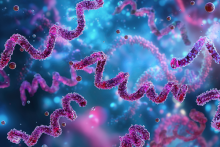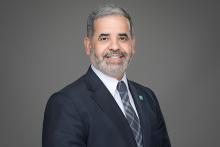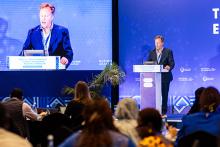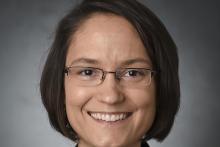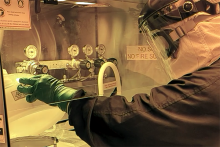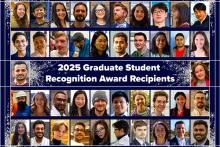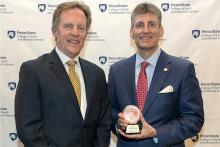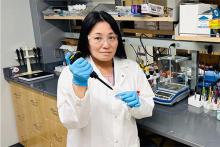With a four-year, $2.7 million grant from the National Institutes of Health’s National Institute of Allergy and Infectious Diseases, Penn State researchers, along with clinical partners at Penn State Health, Carle Foundation Hospital and University of Alabama Birmingham, aim to develop a one-step confirmatory laboratory test that can definitively diagnose active syphilis infection within 10 minutes.
The 2025 Richard E. Tressler Lecture in Materials will be held at 3:05 p.m. on Thursday, April 24, in 101 Agricultural Sciences and Industries Building on the Penn State University Park campus. Faisal Mohammed Al-Faqeer, senior vice president of liquids to chemicals at Saudi Aramco, will deliver the lecture, “Oil and Gas Sector: Cutting-Edge Advanced Materials for Sustainable Energy.”
For some pressing research problems, an ocean’s worth of distance isn’t enough to prevent the connection to some common ground. That’s the point behind the annual National Academies U.S.-Africa Frontiers of Science, Engineering and Medicine (NASEM) Symposium. And it’s why the College of Earth and Minerals Sciences (EMS) joined Google, the Gates and Rutter Foundations, the Department of Defense and others as sponsors of the event.
Five University faculty members, including one from the College of Earth and Mineral Sciences, have received 2025 Faculty Scholar Med
The Materials Research Institute (MRI) at Penn State has announced the recipients of the 2025 Interdisciplinary Seed Grants and Trans
The 2025 Richard E. Tressler Lecture in Materials will be held at 3:05 p.m. Tuesday, April 15, in 101 Agricultural Sciences and Industries Building on the Penn State University Park campus. Arthur Martin, vice president of research and development for North America at Arkema, will deliver the lecture, “Arkema: Innovative Materials for a Sustainable World” and receive the 2025 R.E. Tressler Award.
Penn State recognized 42 graduate students with annual University awards that celebrate students' impact in research, scholarship, teaching, outreach, mentoring and more.
Penn State's College of Earth and Mineral Sciences (EMS) recognized exceptional students and faculty for their academic excellence, service and leadership during its annual Wilson Awards Celebration, held on March 30.


